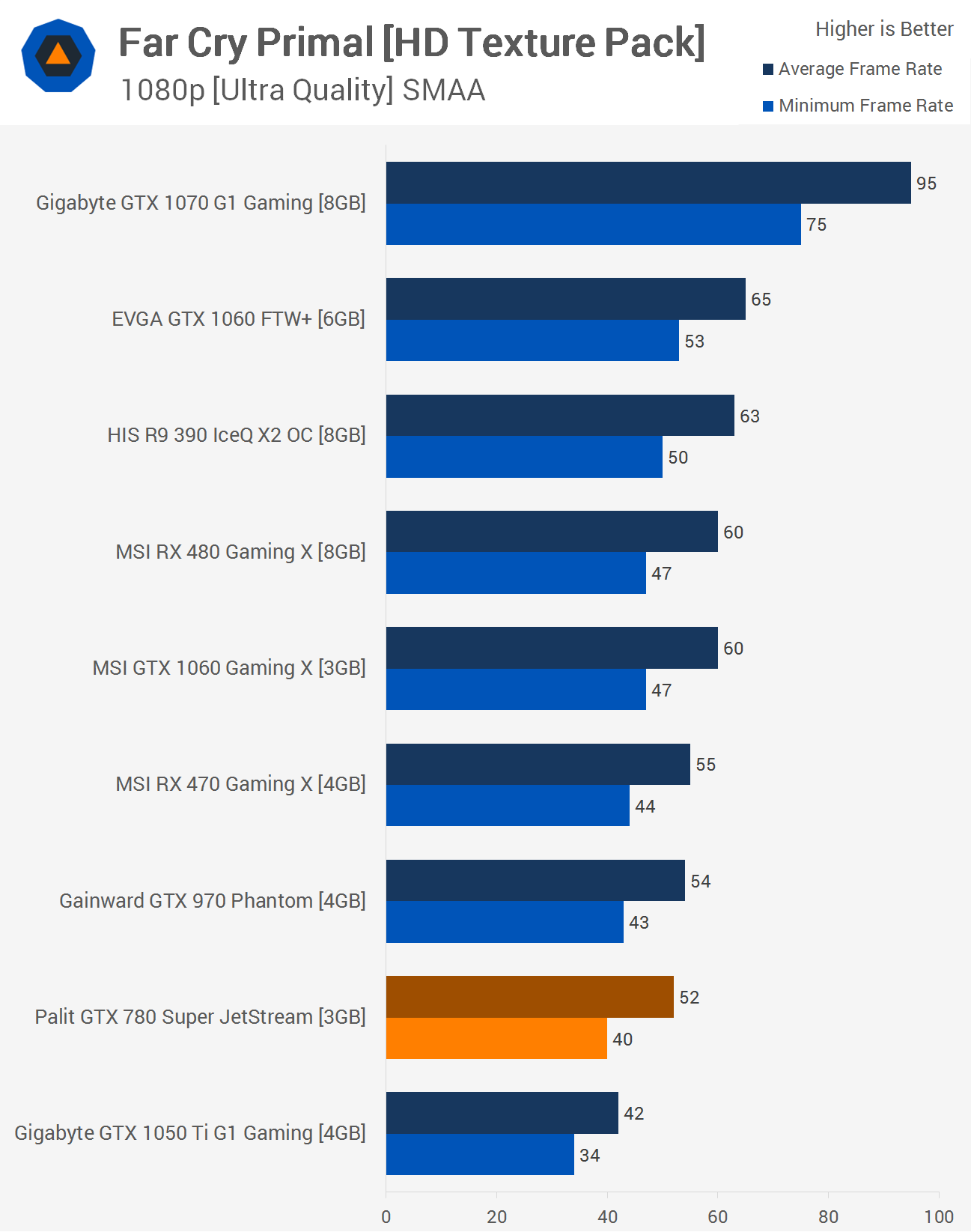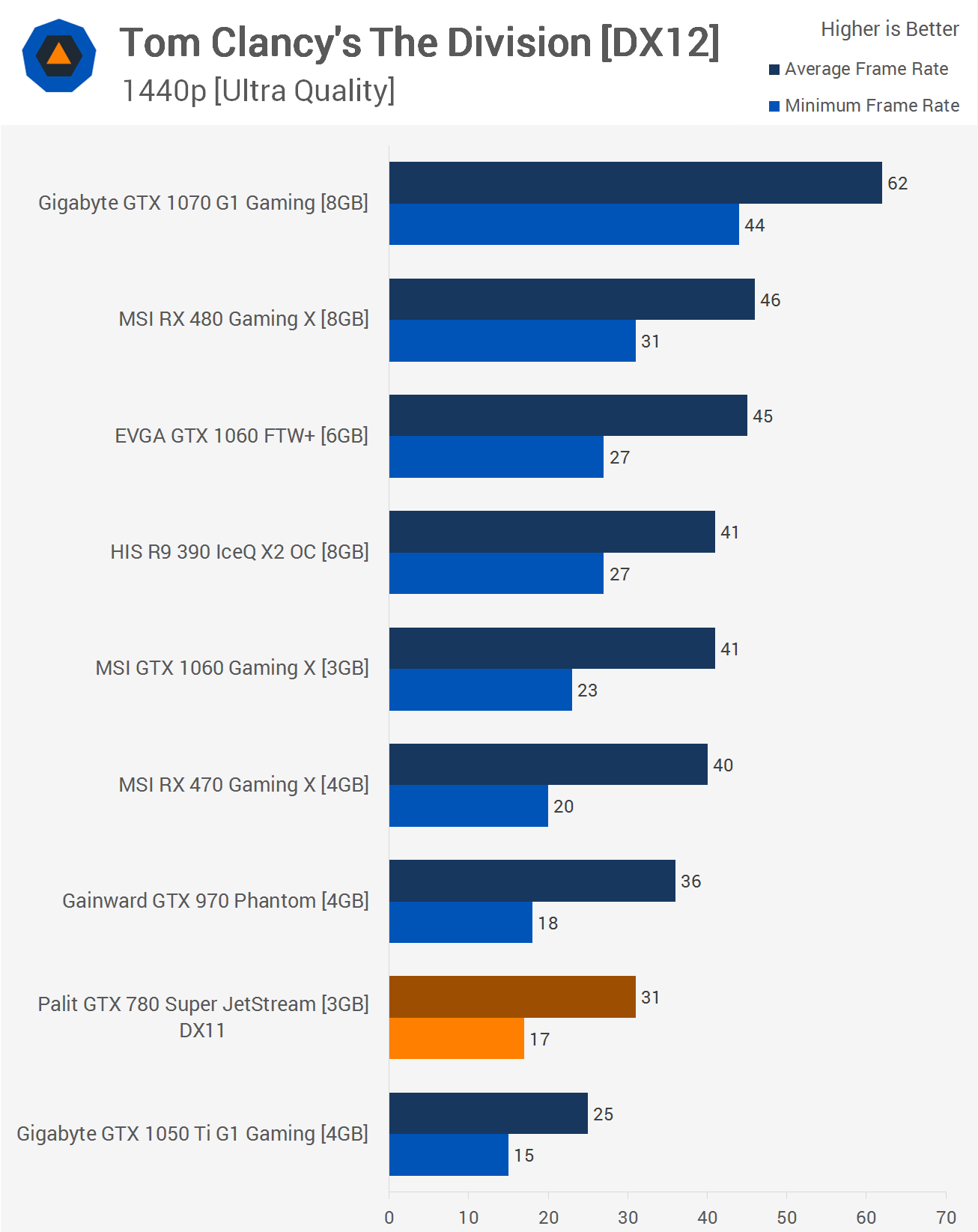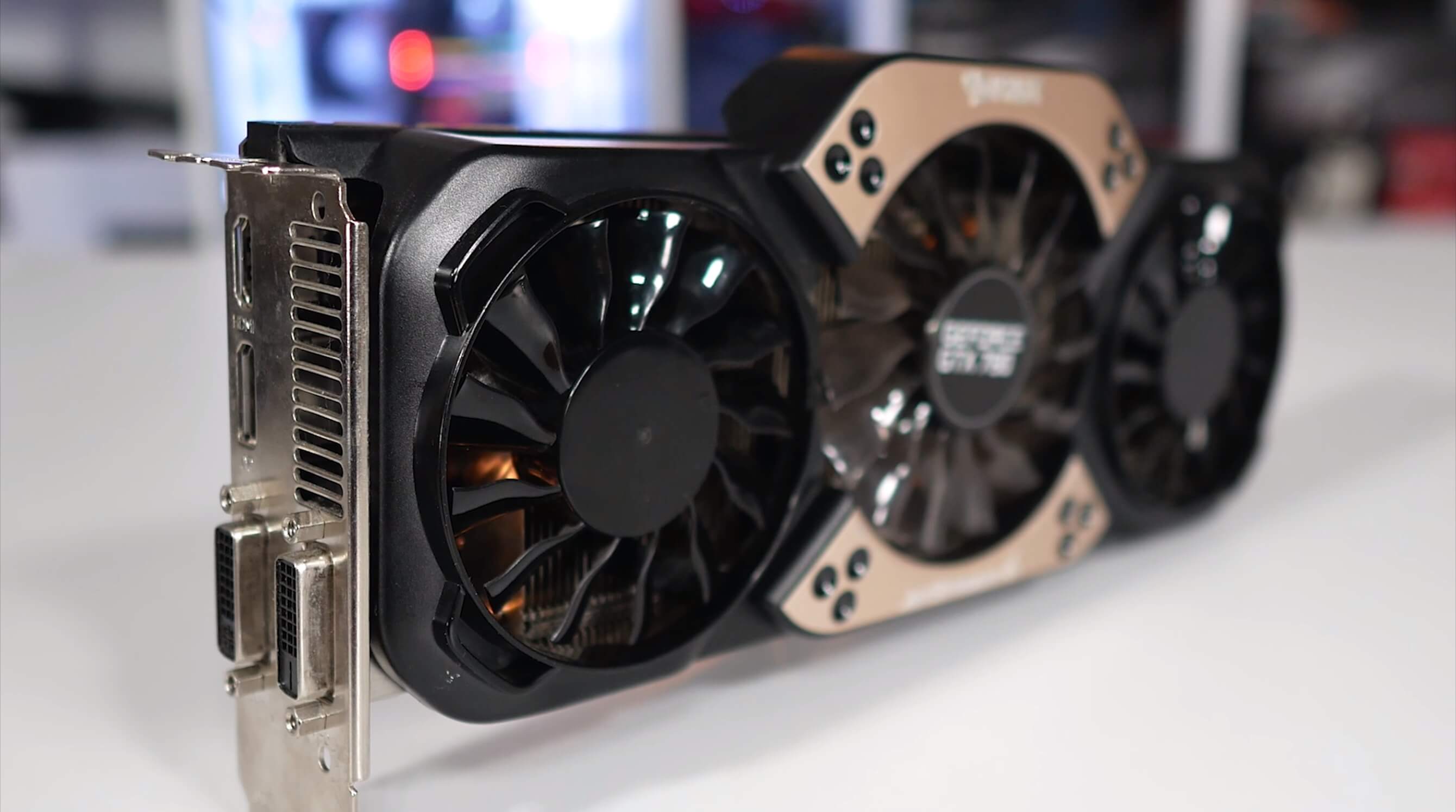Breaking from our usual benchmarking of new graphics cards, today we're revisiting one of the most powerful GPUs you could've purchased four years ago. The GeForce GTX 780 launched in May 2013 and was the second card to be based on Nvidia's Kepler architecture, which debuted with 2012's GTX 680.
The GTX 680 was later refreshed as the GTX 770 with higher clocked GDDR5 memory, but shortly prior to that we received the GTX 780, a brand new bit of silicon that boosted the core count by a whopping 50% and took the die size to 561mm2, which wasn't even the full configuration. All 2880 CUDA cores weren't enabled until the GTX 780 Ti landed six months later.
At the time, these big Kepler cards were mighty impressive. For example, at launch, the GTX 780 was ~24% faster than the GTX 680 and 16% faster than the Radeon HD 7970 GHz Edition.
The GTX 780 remained king of the hill for six months until the GTX 780 Ti shipped, though it was AMD's Radeon R9 290 series that proved to be the real issue as its arrival forced Nvidia into hefty price cuts, slashing the GTX 780 from its introductory MSRP of $650 to $500, where it was still a somewhat weak proposition against the cheaper, quicker R9 290.
According to the tests we ran in 2013, the R9 290 was slightly faster in Battlefield 3, Crysis 3, Far Cry 3, Medal of Honor Warfighter, Metro Last Light and BioShock Infinite. Meanwhile, the R9 290 was a good bit quicker in Battlefield 4, Dirt 3, Max Payne 3, Sleeping Dogs and Hitman Absolution. In fact, the only game where the GTX 780 came out on top was Tomb Raider.
Since then, the GTX 780 has been on its back foot while the R9 290 has been as fast or often slightly faster, with many gamers complaining that Kepler-based graphics cards such as the GTX 780 have continued to fall away. Whereas the R9 290 and its reincarnation the R9 390 are still able to hold their ground today, it's said that the GTX 780 has crumpled into a heap, putting out performance on par with today's entry-level GPUs.
To learn whether that's accurate, I've tested 22 PC games at 1080p and 1440p to see how the once mighty GeForce GTX 780 compares against more modern GPUs. In place of the R9 290 is the R9 390 and while I'm sure many of you would have liked to see the R9 290 in this battle, there's honestly little to no clock-for-clock difference between the 290 and 390.
All benchmarks were conducted using our Core i7-7700K test system clocked at 4.9GHz and the latest AMD and Nvidia drivers available.
Test System Specs & Memory
- Intel Core i7-7700K @ 4.9 GHz
- Asrock Z270 Extreme4
- 32GB DDR4-3000 RAM
- Samsung SSD 850 Evo 2TB
- Gigabyte GTX 1050 Ti G1 Gaming [4GB]
- Gainward GTX 970 Phantom [4GB]
- MSI RX 470 Gaming X [4GB]
- MSI RX 480 Gaming X [4GB]
- MSI GTX 1060 Gaming X [3GB]
- MSI RX 480 Gaming X [8GB]
- HIS R9 390 IceQ X2 OC [8GB]
- Gainward GTX 970 Phantom [4GB] OC
- EVGA GTX 1060 FTW+ [6GB]
- HIS R9 390 IceQ X2 OC [8GB] OC
- Gigabyte GTX 1070 G1 Gaming [8GB]
- Windows 10 Pro 64-bit
- GeForce Game Ready Driver 381.89
- Crimson ReLive Edition 17.4.4
Let the Benchmarks Begin

The GTX 780 isn't a great deal slower than the 970 in Far Cry Primal at 1080p and this meant it was 24% faster than the GTX 1050 Ti. That said it was 17% slower than the R9 390 which was good for an average of 63 fps.

The margins grew ever so slightly at 1440p, here the GTX 780 was 20% slower than the R9 390 and still a few frames behind the RX 470. That said the GTX 780 is now almost 30% faster than the GTX 1050 Ti.

This time testing with Tom Clancy's The Division the GTX 780 finds itself situated right between the GTX 1050 Ti and GTX 970. This meant at 1080p it was 20% slower than the R9 390.

Moving to 1440p the margin remains much the same, the GTX 780 was 24% faster than the 1050 Ti but 14% slower than the GTX 970 and this put it well off the pace of the R9 390 as well as the current generation mid-range contenders.


